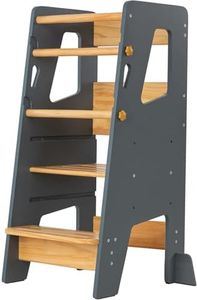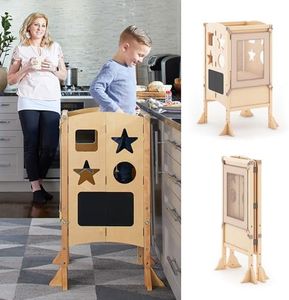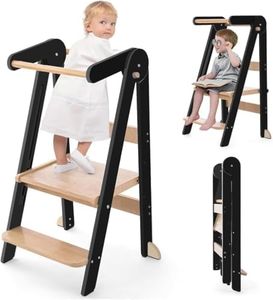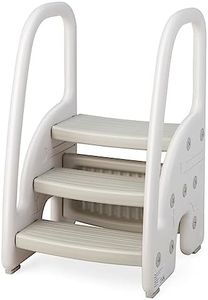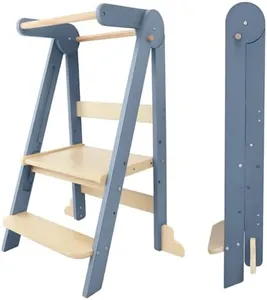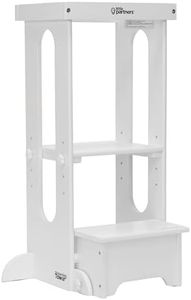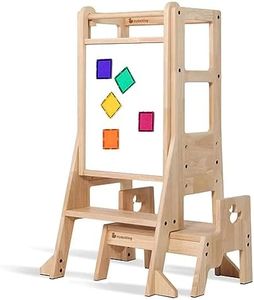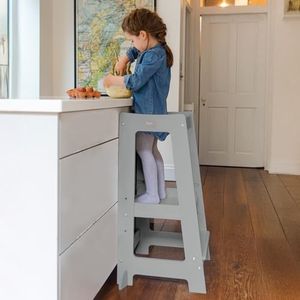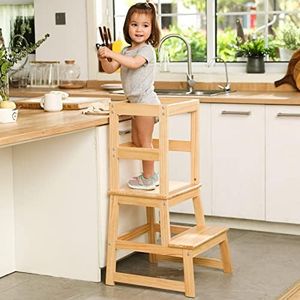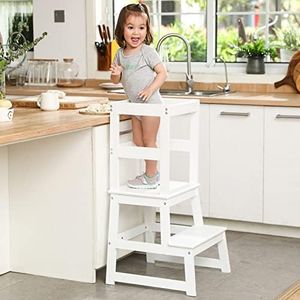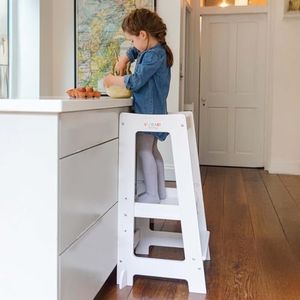We Use CookiesWe use cookies to enhance the security, performance,
functionality and for analytical and promotional activities. By continuing to browse this site you
are agreeing to our privacy policy
10 Best Toddler Towers
From leading brands and best sellers available on the web.Buying Guide for the Best Toddler Towers
When shopping for a toddler tower (also known as a learning tower or kitchen helper), the main goal is to support your child’s independence and safely include them in activities at counter height, such as cooking or washing hands. You want something stable, secure, and adjustable so your toddler can safely climb up and participate in family life. Think about where and how you’ll use it most often—kitchen, bathroom, or family room—and check that it fits easily in those spaces and through doorways when moved. Always supervise your child when they are using the tower.Height AdjustabilityHeight adjustability refers to whether the tower platform can be set at different levels to match your child’s growth or different counter heights. This is important because as your child grows, you want the tower to remain comfortable and safe to use. Some towers offer fixed height, while others let you change the platform level. If you want the tower to last through different ages or be shared among kids of different sizes, look for models with multiple adjustable heights. For younger or smaller toddlers, starting on a lower setting is safer, while taller or older kids might use the higher positions.
Safety FeaturesSafety features include guardrails, anti-tip bases, and secure, non-slip steps. This is crucial because an unstable or open-sided tower can increase the risk of falls or injuries. Some towers have high sides and a back rail to keep your child from stepping or falling off, while others are more open. Anti-tip features usually make the base wider or heavier for stability. For active or wobbly toddlers, or if the surface where you’ll use it isn’t perfectly flat, prioritize models with taller guard rails and a stable, wide base.
Material QualityMaterial quality means what the tower is made from: typically wood or plastic. This matters because it affects sturdiness, durability, and how easy it is to clean. Wood tends to be more solid but might be heavier and can show wear over time; plastic is lighter and may be easier to wipe, though it could be less visually appealing or less sturdy. If you use the tower all the time and want it to last through multiple children, go for solid wood or high-quality engineered wood. If you value easy moving and cleaning, or anticipate only short-term use, plastic can be a good fit.
Size and FootprintSize and footprint means physical dimensions and how much floor space the tower needs. This is important to make sure it fits in your kitchen or wherever you plan to use it, and is not constantly in the way. Towers come in slim versions for tight spaces or wider, more stable designs—bigger ones may not fit between countertops and islands, or through narrow doorways. Measure your existing space before buying and consider where you’ll store the tower when not in use.
Ease of CleaningEase of cleaning refers to how simple it is to wipe down or wash the tower, which matters because kitchen activities with toddlers can be messy! Designs with fewer crevices and smooth surfaces are simpler to clean. Some materials, like sealed wood or plastic, resist stains better than unfinished wood. If you plan to do lots of baking, arts, or crafts with your toddler, pick a tower that can be easily wiped down without special cleaning products.
PortabilityPortability means how easy it is to move the tower from place to place. Some towers have handles or are lightweight, while others are heavy and meant to stay put. If you plan to use the tower in several rooms or store it out of the way between uses, look for one with easy-carry cutouts or lighter construction. For fixed use in one spot, portability matters less, and you can prioritize sturdiness over ease of moving.
